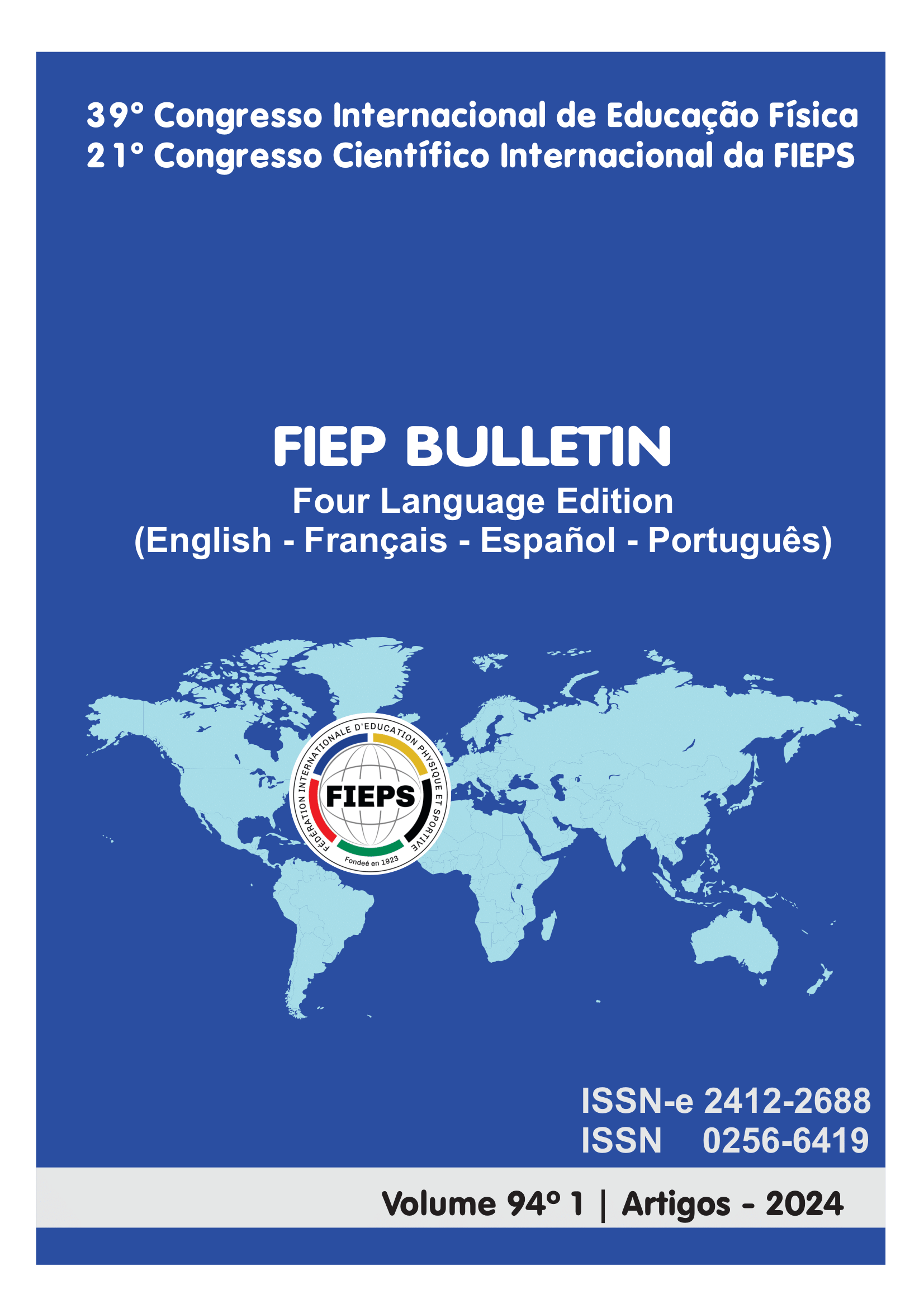PHYSIOLOGICAL BASES OF TRAINING FOR HALF-DISTANCE AND LONG-DISTANCE ATHLETICS RUNNERS: A BASIS FOR PRESCRIBING TRAINING FOR SPRINT ORIENTEERING ATHLETES
DOI:
https://doi.org/10.16887/fiepbulletin.v94i1.6795Abstract
The sprint modality of the orienteering sport is a medium-duration event (12-15min) with peaks of intensity and consequently variations in metabolic demand. The ability to specifically recruit muscular action without reducing performance is crucial to the athlete's final result. The training methodology used in this modality must consider anaerobic metabolism, even with less participation throughout the event, as an important factor limiting performance. Based on this observation, the present study aimed to evaluate the need to use half-distance and long-distance training forms as a basis for athletes in this sprint modality. The available literature provides important information based on medium and long-distance events, however there is an important gap regarding sprint events. Despite this, the available information contributed to demonstrating that anaerobic metabolism is an important factor determining performance. It was then concluded that the sports season training program must include aspects of anaerobic training with the objective of improving performance in sprint orienteering events, minimizing the effects of increased blood lactate due to intensity peaks and variation in running speed during the competition.
Downloads
References
Almeida, R. A. C. d. S. d. (2011). "Análise preliminar da influência anaeróbia no desempenho de atletas de orientação." Fiep Bulletin - online 80(0).
Batista, M. M., A. C. Paludo, D. A. S. MP, M. V. Martins, P. H. Pauli, G. Dal'maz, J. M. Stefanello and M. P. Tartaruga (2021). "Effect of mental fatigue on performance, perceptual and physiological responses in orienteering athletes." J Sports Med Phys Fitness 61(5): 673-679. DOI: https://doi.org/10.23736/S0022-4707.21.11334-9
Billat, L. V. (2001). "Interval training for performance: a scientific and empirical practice. Special recommendations for middle- and long-distance running. Part I: aerobic interval training." Sports Med 31(1): 13-31. DOI: https://doi.org/10.2165/00007256-200131010-00002
Billat, L. V. (2001). "Interval training for performance: a scientific and empirical practice. Special recommendations for middle- and long-distance running. Part II: anaerobic interval training." Sports Med 31(2): 75-90. DOI: https://doi.org/10.2165/00007256-200131020-00001
Billat, L. V. and J. P. Koralsztein (1996). "Significance of the velocity at VO2max and time to exhaustion at this velocity." Sports Med 22(2): 90-108. DOI: https://doi.org/10.2165/00007256-199622020-00004
Bird, S. R., R. Bailey and J. Lewis (1993). "Heart rates during competitive orienteering." Br J Sports Med 27(1): 53-57. DOI: https://doi.org/10.1136/bjsm.27.1.53
Creagh, U. and T. Reilly (1997). "Physiological and biomechanical aspects of orienteering." Sports Med 24(6): 409-418. DOI: https://doi.org/10.2165/00007256-199724060-00005
Hébert-Losier, K., K. Jensen and H. C. Holmberg (2014). "Jumping and hopping in elite and amateur orienteering athletes and correlations to sprinting and running." Int J Sports Physiol Perform 9(6): 993-999.
Hébert-Losier, K., K. Jensen and H. C. Holmberg (2014). "Jumping and hopping in elite and amateur orienteering athletes and correlations to sprinting and running." Int J Sports Physiol Perform 9(6): 993-999. DOI: https://doi.org/10.1123/ijspp.2013-0486
Hébert-Losier, K., S. Platt and W. G. Hopkins (2015). "Sources of Variability in Performance Times at the World Orienteering Championships." Med Sci Sports Exerc 47(7): 1523-1530. DOI: https://doi.org/10.1249/MSS.0000000000000558
Johansson, C., L. Tsai, E. Hultman, R. Tegelman and A. Pousette (1990). "Restoration of anabolic deficit and muscle glycogen consumption in competitive orienteering." Int J Sports Med 11(3): 204-207. DOI: https://doi.org/10.1055/s-2007-1024792
Larsson, P., L. Burlin, E. Jakobsson and K. Henriksson-Larsén (2002). "Analysis of performance in orienteering with treadmill tests and physiological field tests using a differential global positioning system." J Sports Sci 20(7): 529-535. DOI: https://doi.org/10.1080/026404102760000035
Smekal, G., S. P. Von Duvillard, R. Pokan, K. Lang, R. Baron, H. Tschan, P. Hofmann and N. Bachl (2003). "Respiratory gas exchange and lactate measures during competitive orienteering." Med Sci Sports Exerc 35(4): 682-689. DOI: https://doi.org/10.1249/01.MSS.0000058358.14293.DE
Tønnessen, E., I. S. Svendsen, B. R. Rønnestad, J. Hisdal, T. A. Haugen and S. Seiler (2015). "The annual training periodization of 8 world champions in orienteering." Int J Sports Physiol Perform 10(1): 29-38. DOI: https://doi.org/10.1123/ijspp.2014-0005
Wakefield, B. R. and M. Glaister (2009). "Influence of work-interval intensity and duration on time spent at a high percentage of VO2max during intermittent supramaximal exercise." J Strength Cond Res 23(9): 2548-2554. DOI: https://doi.org/10.1519/JSC.0b013e3181bc19b1
Downloads
Published
How to Cite
Issue
Section
License
Autores que publicam nesta revista concordam com os seguintes termos:- Autores mantém os direitos autorais e concedem à revista o direito de primeira publicação, com o trabalho simultaneamente licenciado sob a Licença Creative Commons Attribution que permite o compartilhamento do trabalho com reconhecimento da autoria e publicação inicial nesta revista.
- Autores têm autorização para assumir contratos adicionais separadamente, para distribuição não-exclusiva da versão do trabalho publicada nesta revista (ex.: publicar em repositório institucional ou como capítulo de livro), com reconhecimento de autoria e publicação inicial nesta revista.
- Autores têm permissão e são estimulados a publicar e distribuir seu trabalho online (ex.: em repositórios institucionais ou na sua página pessoal) a qualquer ponto antes ou durante o processo editorial, já que isso pode gerar alterações produtivas, bem como aumentar o impacto e a citação do trabalho publicado (Veja O Efeito do Acesso Livre).









